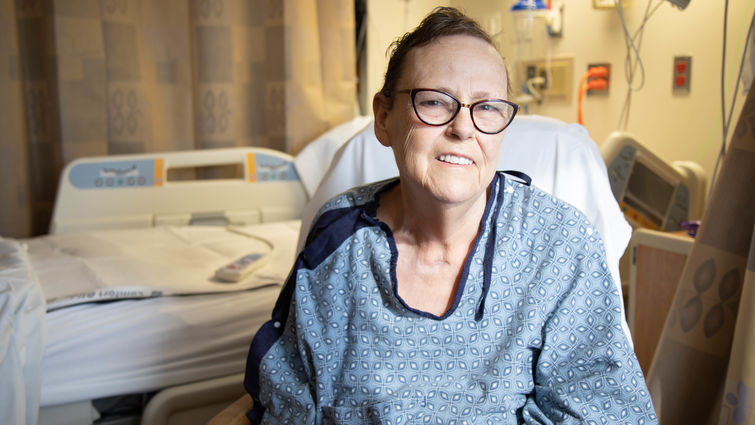
On Monday, December 9, Loma Linda University International Heart Institute performed its 500th TAVR procedure (transcatheter aortic valve replacement), which allowed a 68-year-old grandmother to go home for the holidays.
Anita Bayerque had endured fainting spells in June of this year. She was diagnosed with severe aortic valve stenosis at Loma Linda University International Heart Institute while undergoing evaluation for treatment, including TAVR. During the evaluation, she went into a coma due to the worsening of her condition and heart failure. She was believed to be too unstable to survive a procedure, and doctors were considering removing her off life support.
Two months after slipping into a coma, Bayerque awakened, was transferred back to Loma Linda University Medical Center and was given the TAVR procedure on Monday, December 9. Her procedure marked the 500th TAVR patient for the team at Loma Linda University International Heart Institute.
“To be alive to see my family for the holidays is a miracle, and I thank Loma Linda University Health,” Bayerque said. “I am so grateful I fought to come here because they are so caring and the best at what they do. I felt my life was in good hands because I knew they would do what was best for me.”
Islam Abuddayeh, MD, an interventional cardiologist who helped perform the surgery, said Bayerque being the team’s 500th TAVR patient has inspired the team to continue moving forward in providing innovative care.
“The Loma Linda University Health mission is to make man whole. We keep in mind that we are taking care of a person not a disease,” Abudayyeh said. “With that in mind, interventional cardiology treatments like TAVR are just the beginning for the Institute. We strive to find and utilize the best treatment options that will give our patients the quality of life they want.”
TAVR is an alternative procedure to open heart surgery that treats aortic stenosis — a heart valve disease that causes reduced blood flow through the aortic valve. The disease causes patients to suffer from chest pain, dizziness, shortness of breath and fatigue when doing simple tasks like walking a few feet. After the procedure, patients are back on their feet, and they are able to have a better quality of life just hours after the treatment.
Concerned about your heart health? Schedule a consultation with a cardiologist.
To perform this less invasive procedure, a cardiologist and a cardiothoracic surgeon puncture an artery in the leg. Through this small puncture, the team implants a new valve on a balloon slender enough to fit in the artery. The cardiologist then advances this valve through a sheath to replace the diseased valve. TAVR is conducted under conscious sedation or general anesthesia, takes less than an hour and allows patients to go home usually the next day.
The International Heart Institute began using the procedure in 2013, and it continues to perform the most TAVR along with other transcatheter valve procedures in the Inland Empire. In August of 2019, the FDA approved the procedure for low-risk patients, increasing the number of heart patients who qualify for this life-saving treatment.
